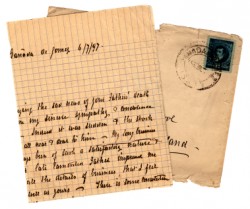 The loss of a loved one and the planning of an entire funeral from start to finish is an exhausting affair. It’s not uncommon for those undergoing bereavement to feel both physically and mentally exhausted, and emotions can run through a course of highs and lows in a matter of minutes. Among all the chaos of guests arriving from out of town and navigating the financial side effects of death, it can seem impossible to find time to write funeral thank you notes.
The loss of a loved one and the planning of an entire funeral from start to finish is an exhausting affair. It’s not uncommon for those undergoing bereavement to feel both physically and mentally exhausted, and emotions can run through a course of highs and lows in a matter of minutes. Among all the chaos of guests arriving from out of town and navigating the financial side effects of death, it can seem impossible to find time to write funeral thank you notes.
Funeral etiquette dictates that the family of the deceased send out thank you cards in the days and weeks following the funeral. Fortunately, this isn’t the time-consuming, tedious task it sounds like. Not only can you purchase pre-prepared thank you cards and send them out, but you can recruit the help of others and make it a chance to bond and share your grief.











